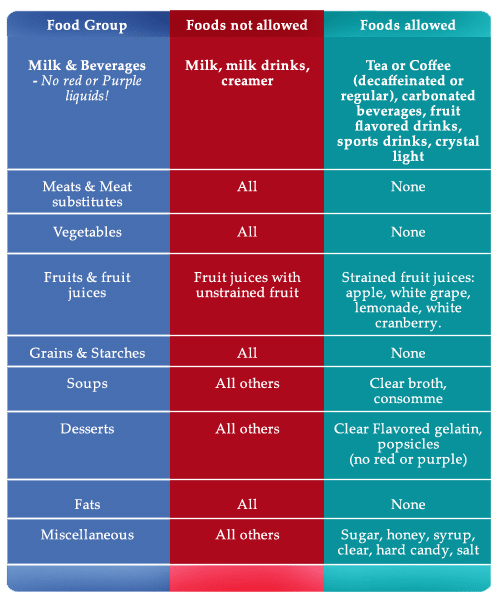
Usually, that means starting with a clear liquid diet, transitioning to a full liquid diet, and then moving back to regular foods.Īnother common reason for a liquid diet is dysphagia, or trouble swallowing. “We have the ability to really get more key nutrients into a full liquid diet versus a clear, which is really just a little bit of calories and a little bit of sugar or carbohydrates." “They kind of ease and transition the person or the patient back into regular eating.” "We want to give the body a chance to kind of get back to baseline,” says Basbaum. For certain procedures, especially in gastroenterology, the surgeon also needs your stomach to be empty to help them do your job.Īfter surgery, you can still have nausea, especially if your guts were the target of the operation. There’s a risk you could choke on your own vomit while you’re knocked out. Anesthesia can cause nausea, and your surgeon doesn’t want you vomiting on the table. If a healthcare provider recommends a liquid diet, then yes, it’s for your benefit. “We have the ability to really get more key nutrients into a full liquid diet versus a clear, which is really just a little bit of calories and a little bit of sugar or carbohydrates,” she says “Full liquid is basically anything that is smooth and blenderized and pureed, so if you think about yogurt, as long as it doesn't have any chunks, a creamy blend rice soup or an apple sauce or some other pureed fruit, ice cream, milkshakes, anything that's just kind of smooth but you could almost drink through a large straw if you had to,” says Basbaum.Ī full liquid diet allows patients to take in more significant nutrition than the clear version, says Basbaum. If the liquid is opaque, meaning you can’t see through it, it’s off the menu.Ī full liquid diet, on the other hand, presents many more options. On a liquid diet, you consume only liquids, nothing solid or chunky that requires you to chew.Ī clear liquid diet is very restrictive, limiting you to clear juices like apple juice, Jell-O, and clear broths like chicken broth. Remember in science class when you learned about the states of matter: solid, liquid, and gas? (And plasma, but we don’t eat that). Here’s what you should know about liquid diets, when they’re recommended, and why they’re probably best left to the experts. Many think it will be an easy way to lose weight, she says, but the truth is much more complicated. “I do have a fair amount of patients that come to me and say, ‘Well, what about a liquid diet?’” says Basbaum. Maybe you’ve also heard of a friend (or a social media influencer) doing a DIY liquid-only diet to lose weight fast by taking their favorite foods off the menu. Healthcare providers prescribe these diets carefully based on patient needs. You can consume basically any food pureed thin and smooth enough to be slurped through a straw. On a full liquid diet, you have a lot more options. On a clear liquid diet, you’re in for a boring rotation of broth, Jell-O, and maybe a bit of apple juice. So what can you eat on a liquid diet? There are two types of liquid diets: the very restrictive clear liquid diet and the less restrictive full liquid diet. These diets are designed to reduce risks associated with these circumstances, especially the risk of vomiting or choking, says Katherine Basbaum, M.S., R.D., a Clinical Dietitian for UVA Health.
/464641591-resize-56a6b5035f9b58b7d0e46350.jpg)

Your healthcare provider might put you on an easy-to-swallow, easy-to-digest liquid diet when you’re dealing with certain health issues, like preparing for or recovering from a medical procedure or having trouble chewing or swallowing food. If you’ve ever woken up from a surgery craving a snack only to be served a tray with Styrofoam cups of Jell-O and chicken broth, well, then you’ve experienced a liquid diet.


 0 kommentar(er)
0 kommentar(er)
